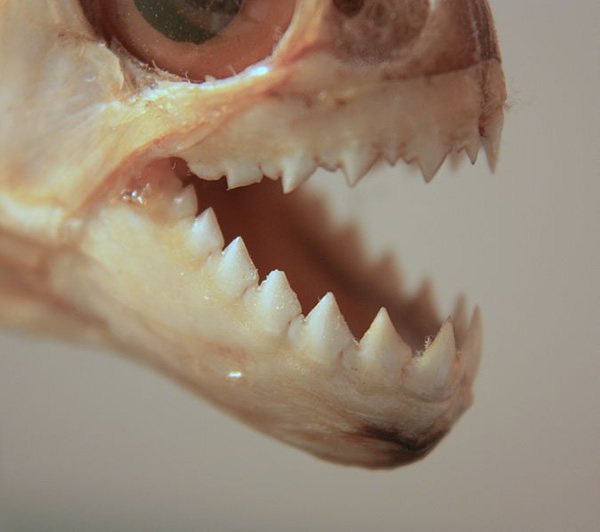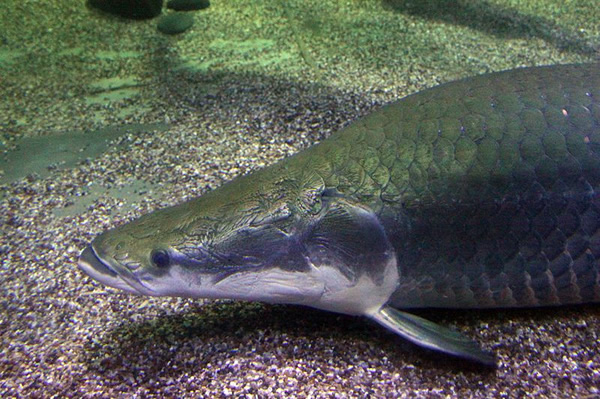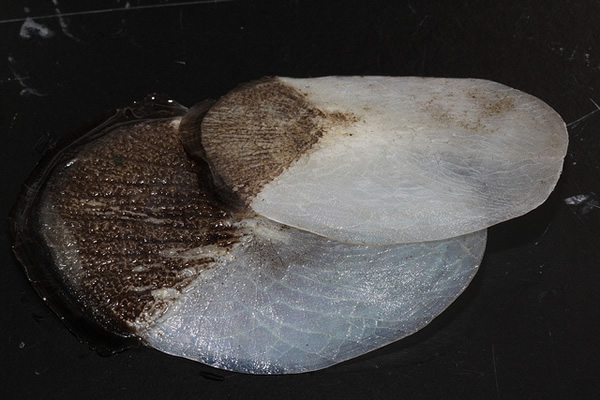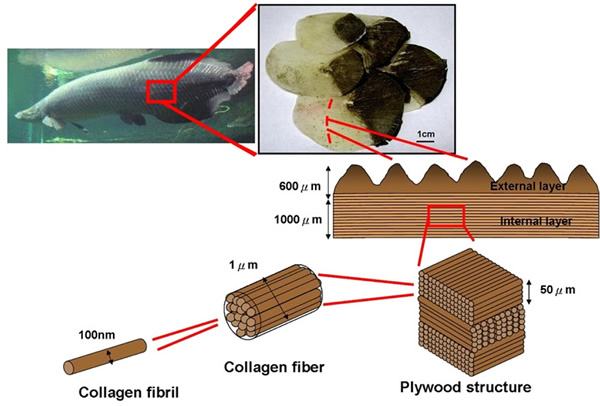


That got Meyers thinking how the arapaima, which should've been a swimming buffet for the hungry piranhas, survived. The answer is in in its scales. Continue reading
A couple of years ago, mechanical engineer Marc Meyers was sport fishing in Brazil and caught an arapaima. To catch one, fishermen waited until the fish comes up for air (arapaimas have lungs and need to breathe fresh air - another peculiarity about the species, but that's another story), then tossed a large hunk of meat as bait. If the arapaima missed the meat, the bait would only survive five minutes in the water before the piranhas get to it.
That got Meyers thinking how the arapaima, which should've been a swimming buffet for the hungry piranhas, survived. The answer is in in its scales.
In 2011, Meyers and collegues at University of California San Diego took an arapaima scale and simulated a piranha bite. They found that the piranha tooth shattered before it could fully penetrate tissue beneath the scale. That's because the tough scales can resist pressures up to 1.7 million pounds per square inch (that's twice the maximum pressure that the steel hull of the Seawolf class nuclear submarine could handle, by the way)
But how could the arapaima scales be so tough? Meyers found that the scale combined a heavily mineralized outer layer (similar to the hard enamel of a tooth) combined with an internal layer of more squishy collagen fibers stacked in a criss-cross manners, similar to strands of wood in a plywood.

The hard-on-soft pattern does the trick, Meyers says. If you shatter a uniformly rigid material—say, a ceramic bowl—cracks will spread from the site of impact all the way through, he explains. But because the hard outside of an arapaima scale is backed by more squishy material, "the cracks will stop." It's a common armoring strategy, he notes. Take our teeth, which are covered in enamel but have a core made from more pliant dentine.A particularly nice feature of the arapaima scales is that they're tough, yet lightweight and flexible. Three features that would make for a perfect armor, according to Robert O. Ritchie of the Lawrence Berkeley National Laboratory.
Ritchie, Meyers and colleagues placed the scales in an X-ray beam and then applied force to them and found that the collagen layers can re-orient themselves - in real time - to resist the force. In essence, it's an adaptable body armor. Ritchie said to The Telegraph:The structure of the arapaima scale may inspire engineers to create a new type of body armor. "Lightweight body armor is something everyone wants," he said as reported by National Geographic's Phenomena, "the Kevlar armor our troops get is extremely heavy and many people don't bother wearing them. But nature does it very well."
“The dermal scales of the Arapaima fish are a prime example of how the structural arrangement of simple biological components can create armour with the capacity to be tough yet penetration resistant.
“The ability of the A. gigas’ outer dermal layer to resist predatory attacks derives from its sophisticated structure from the nano- to macro-length-scales.
“The outer mineral layer gives the scale hardness and penetration resistance whereas the overlapping of the scales and the corrugated outer surface of the mineral layer allow the scales to bend transferring tensile stress to the inner lower-mineralised lamellae.”

No comments:
Post a Comment